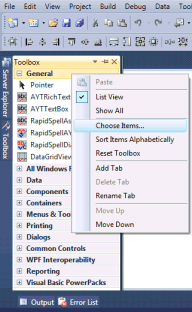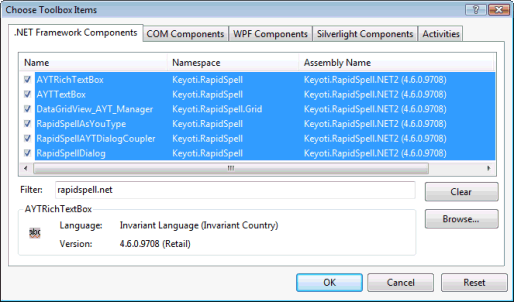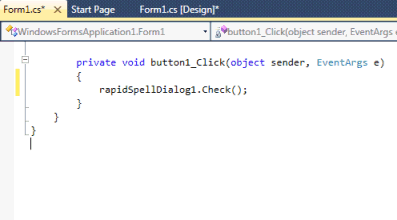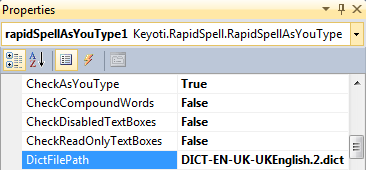|
Step 2. Add the RapidSpell Controls to your ToolBox(if you have older versions listed, please remove them).
Note: .NET 4 users should only add controls from, and reference Keyoti.RapidSpell.NET4.dll .NET 2 & 3 users should only add controls from, and reference Keyoti.RapidSpell.NET2.dll .NET 1.x users should use Keyoti.RapidSpell.dll instead Next Step 6. Run!
Note:- By default a US English dictionary is used, to switch it to another dictionary (eg. UK) please click here. - To offer an "Add" function to the user, set the UserDictionaryFile property to the file path where the dictionary should be stored (eg. "user-dictionary.txt"). Users can edit the word being checked using the dialog form and replace it with their own. Changing the main dictionaryIncluded are 5 dictionaries assemblies, AU, CA, UK and US English and a combined UK and US dictionary. These are located in the Dictionaries folder under the install folder. To change the dictionary being used;
Note: By default, when a Dict File is not specified, the built-in US English dictionary is used. | ||||||||||









